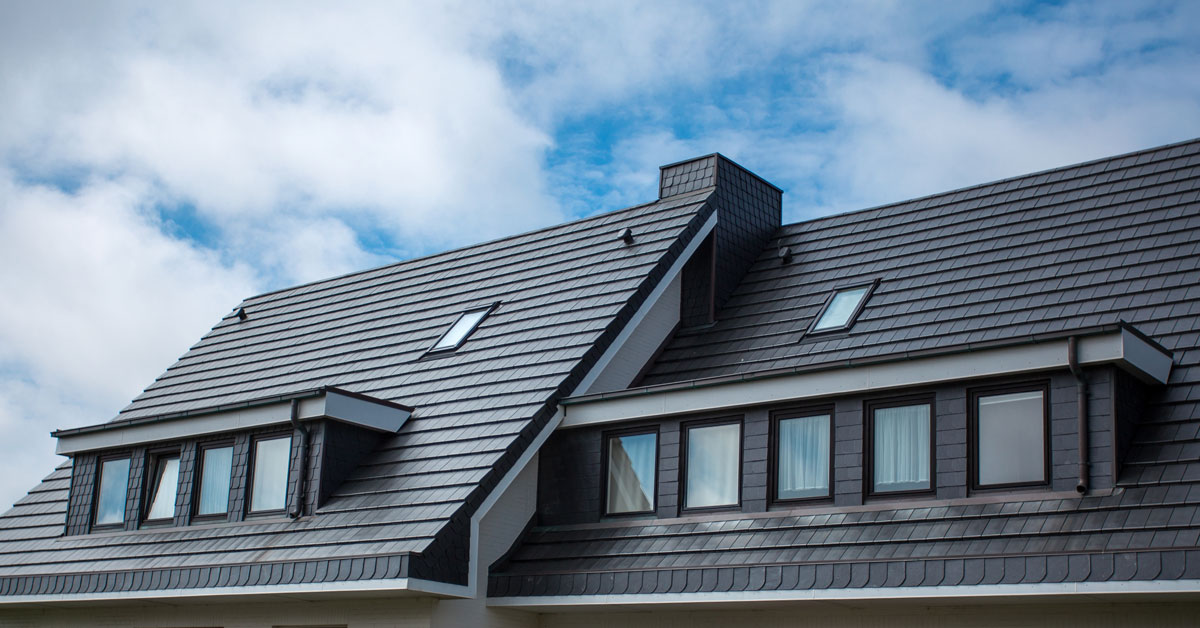Best Practices for Ensuring Correct Roof Covering Ventilation
Guaranteeing appropriate roof ventilation is critical for the longevity and effectiveness of a roof system. A well balanced intake and exhaust air vent proportion, typically 1:300, plays an essential function, with consumption vents ideally positioned at the reduced side of the roof for cool air entry and exhaust vents at the top for cozy air exit. Normal evaluations to determine blockages and preserve clear air movement are extremely important. Keeping insulation away from vents is vital to avoid air movement limitation. Understanding these fundamental aspects sets the phase for more detailed insights right into installation and upkeep practices that can significantly enhance your roofing system's performance.
Understand Air Flow Basics
Correctly comprehending ventilation fundamentals is important for making certain the durability and effectiveness of roof covering systems. Effective air flow reduces moisture buildup and temperature level extremes in the attic, both of which can result in considerable structural damage in time. A well-ventilated roof assists in protecting against common problems such as mold and mildew growth, timber rot, and ice dams, which can endanger the honesty of the roofing products and the underlying frameworks.
The primary goal of ventilation is to assist in the movement of air, enabling a constant exchange in between the exterior and interior settings. This equilibrium is accomplished through a combination of consumption and exhaust vents that collaborate to preserve ideal air movement. Consumption vents, generally situated along the eaves or soffits, permit fresh air to get in the attic room area, while exhaust vents, typically located at or near the roofing system ridge, make it possible for hot, moist air to leave.
Secret variables influencing the effectiveness of roofing system air flow consist of correct positioning, appropriate sizing, and making sure that both consumption and exhaust vents are unhampered. Regular examination and upkeep are critical to recognize prospective blockages, damage, or inefficiencies in the ventilation system, consequently safeguarding the roofing's efficiency and toughness.
Types of Roof Covering Vents
Roofing system vents play an important function in keeping effective attic ventilation and, by expansion, the general health and wellness of the roof covering system. Numerous kinds of roof vents are readily available, each with distinct benefits tailored to details roof covering demands.

Soffit vents are installed under the eaves and operate in tandem with roof vents to make certain a balanced consumption and exhaust system. By permitting cooler air to get in from below, soffit vents help with the expulsion of hot air via top vents. Gable vents, located on the exterior wall surfaces of the attic, deal another reliable remedy, especially in homes with saddleback roofs.
Examine Your Existing Air Flow

Following, think about the age and condition of your roofing materials and ventilation components. Older systems might not abide by present building regulations or may have worn away with time, reducing their effectiveness. Conduct a detailed evaluation to determine any kind of indications of deterioration, such as corrosion, damages, or gaps that can compromise the system's performance.
Additionally, determine the attic temperature level and humidity levels. High temperature levels and humidity can show inadequate air flow.
Installation Best Practices
Reliable installment of roof ventilation systems is extremely important for making certain ideal efficiency and long life. Correct setup begins with comprehending the particular air flow demands of the roofing system and the building it covers. This entails calculating the correct ratio of intake to exhaust vents, commonly sticking to the 1:300 rule, which stipulates one square foot of ventilation for every single 300 square feet of attic room flooring room.

The positioning of vents is similarly important. Consumption vents should be installed at the roof's reduced edge, usually in the soffits, to permit trendy air to get in. Exhaust vents, on the other hand, must be mounted near or at the roofing's top to assist in the exit of cozy, moist air. This creates a natural airflow that helps maintain temperature and dampness equilibrium within the attic room.
Seal all vent links thoroughly to avoid air leaks and possible water infiltration. Use top quality materials and comply with maker guidelines to make certain toughness and efficiency. Additionally, integrating ridge vents with baffles can significantly enhance air flow efficiency by stopping wind-driven rain and snow from entering the attic.
Ultimately, precise installment of roofing ventilation systems mitigates possible concerns such as mold growth, ice dams, and structural damage, ensuring the roofing's integrity and the structure's overall wellness.
Normal Upkeep Tips
Consistency in upkeep techniques is essential to ensuring the long-term performance learn this here now of roof covering ventilation systems. Routine evaluations are critical, ideally done biannually-- in the spring and fall. During these evaluations, make certain that vents are without particles, nests, and various other blockages that could hinder air movement. Examine for any type of signs of wetness build-up or mold and mildew, as these can suggest incorrect ventilation or leakages (roofing companies).
Utilize a soft brush or a vacuum cleaner to eliminate dirt and debris from intake and exhaust vents. Be cautious not to damage the vent screens or louvers during the procedure.
Correct insulation is just as essential. Guarantee that attic room insulation does not block the vents, as this can significantly limit airflow. If any type of insulation has actually moved or worked out, rearrange or replace it to preserve a reliable barrier.
Lastly, change any type of harmed or missing out on elements without delay. Busted vents, broken roof shingles, or scrubby flashing can all add to inadequate air flow and ought to be addressed immediately. Normal maintenance makes sure that the roof covering air flow system works optimally, therefore expanding the life expectancy of the roof covering itself.
Verdict
Making sure appropriate roof air flow is vital for keeping the performance and resilience of a roof system. Adherence to the 1:300 consumption and exhaust vent proportion, combined with the tactical placement of vents, is crucial.
A balanced intake and exhaust air vent ratio, frequently 1:300, plays a critical function, with intake vents ideally positioned at the reduced edge of the roofing system for trendy air entry and exhaust vents at the optimal for cozy air exit. Intake vents, generally located along the soffits or eaves, enable fresh air to enter the attic room, while exhaust vents, often situated at or near the roof covering ridge, enable hot, humid air to get away.
Soffit vents are set up under the eaves and work in tandem with roofing system vents to make sure a well balanced consumption and exhaust system. By permitting cooler air to enter from below, soffit vents assist in the expulsion of warm air via top Read Full Report vents. Adherence to the 1:300 intake and exhaust vent ratio, combined with the critical placement of vents, look these up is crucial.
Comments on “A Comprehensive Take A Look At Roofing Companies Gainesville Locals Recommend”